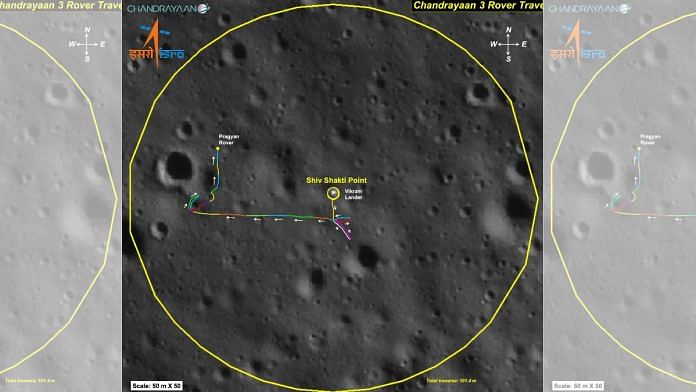New Delhi: The Pragyan rover has moved almost 100m from the Vikram lander, collecting data from the lunar surface, Indian Space Research Organisation (ISRO) chief S. Somanath said Saturday.
Somanath was speaking from the Satish Dhawan Space Centre in Sriharikota right after the successful launch and orbit injection of the Aditya-L1 mission, India’s first mission to the Sun.
Even as ISRO awaits the craft to reach its destination, a journey that will take four months, the Chandrayaan-3 mission team is now gearing up to prepare the lander and the rover for the long night
“The rover has moved almost 100m from the lander. In the coming days, we will be preparing to put the lander and rover to ‘sleep’ in order for them to be able to withstand the long night,” Somanath said.
Vikram made a successful landing near the south pole of the moon on 23 August, making India the first nation to achieve such a feat. Hours after the landing, the Pragyan rover rolled out of the lander and began to explore the lunar surface.
Since then, payloads on Pragyan and Vikram have confirmed the presence of sulphur on the lunar surface.
Pragyan has also managed to show its capability to autonomously navigate the surface of the moon, detecting and avoiding obstacles in its path.
As the lunar ‘day’, which lasts 14 Earth days, comes towards an end, both the Vikram lander and the Pragyan rover will face freezing temperatures likely to jam the systems. However, Somanath’s statement indicates that ISRO will try to make an effort to help the instruments survive the long night, lasting another 14-odd days, in order to continue performing scientific experiments for another lunar day.
Initially, it was expected that the lander and the rover would not last beyond the fourteen days.
(Edited by Smriti Sinha)
Also read: India’s ‘sunshine moment’ — ISRO successfully launches Aditya-L1, its first solar mission



